Another important component of properly maintaining a wastewater treatment is the identification and mitigation of inflow and infiltration (I&I). Inflow is defined as wastewater that enters a wastewater collection system as the result of a deliberate connection. Examples of inflow sources are downspouts, sump pumps, cooling water discharges, water from around manhole lids and holes in manhole lids, yard drains, and catchbasins connected to the sanitary collection system, as well as cross connections between combined sewers and stormwater lines. Infiltration is water entering the wastewater collection system from the ground. Examples of infiltration sources are damaged or defective pipe, pipe joints, connections, and manhole structures. I&I can significantly reduce the capacity of the wastewater collection system to carry actual wastewater, cause unwanted discharges at Combined Sewer Overflows (CSOs) and Sanitary Sewer Overflows (SSOs), overload a water quality treatment center and add to the cost of treating wastewater due to increased volume needing to be treated.

Broken sewer pipe, a major source of infiltration
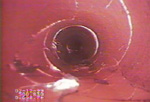
Cracked sewer line, a major source of infiltration, with roots starting to grow through which will widen the cracks
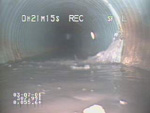
Infiltration through a bad joint

Downspout connected to sanitary sewer

Roots growing through joint and cracks in a sewer line
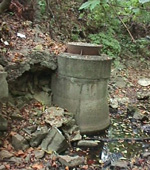
A damaged manhole structure built in a stream bed offers an opportunity for infiltration every time the water rises in a rain event.

A broken manhole structure at the base of a hill, an obvious source of infiltration
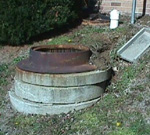
Missing manhole lid and damaged manhole structure are a double source of infiltration during rain events
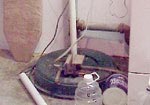
Sump pump connected to sanitary sewer, an inflow problem
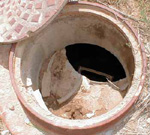
This manhole has two problems, the ring casting being pushed off-center blocks access to the sewer line and also allows infiltratin due to the lack of a tight seal around the casting
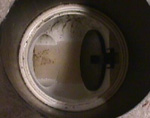
When there is too much I&I into a sewer system the system can become surcharged and attempt to relieve itself through manholes and into homes. One way to prevent this backflow into homes is with a backflow valve installed in the home. This valve allows wastewater to flow out of the home but closes if water tries to flow into the home.


